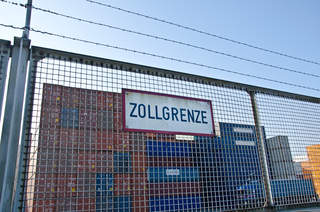
© Calado/Fotolia
Customs Procedures: Fast Lane for Trade in Goods
According to the Federal Statistical Office, in 2020, the value of German goods imports amounted to 1.03 trillion euros. German goods exports amounted to 1.2 trillion euros. According to the German customs administration, imports worth 434 billion euros came from non-EU countries in 2020. German companies exported goods worth 503 billion euros to third countries. Goods reach or leave Germany by ship, land, or air. Before they can be imported, however, they must go through the customs procedure of the EU, an area with uniform customs regulations. Goods exported to the EU are therefore subject to standardised import regulations, customs tariffs, and procedures. In Germany, around 40,000 customs employees ensure that goods are processed quickly and efficiently. In 2020, German customs processed almost 251 million customs declarations.
In many cases, a tariff must be paid on import into the EU. As a rule, import turnover tax, which is similar to value-added tax, is also payable. Some excise duties are also due. But even if no tariff is levied, goods still have to be declared and go through the customs procedure. The customs procedure includes the submission of a customs declaration by the importer, the acceptance of this declaration by the customs office, the verification of the documents and goods, the production of a customs report by the customs office, and the calculation of the import duties.
The EU’s new Union Customs Code (UCC) has been in force since the beginning of May 2016 and was to gradually replace the old Customs Code by the end of 2020. Parts of the reform include data exchange and storage, new simplification and requirements for Authorized Economic Operators (AEOs), and centralized customs clearance. The transitional period is intended to allow the phased adaptation of national IT systems and databases, but at present it will take until at least 2025. The parts of the Customs Code still in use until then and the UCC, which was set to be exclusively in force from 2020, provide for differentiated customs procedures. These will depend on the intended use of the goods. The decisive factor is whether a product is to be freely traded, stored, or further processed within the EU. Only after the customs procedure has been completed can goods be released for free internal trade within the EU. No customs duties are levied in intra-European trade.
Why Customs Procedures?
Originally, tariffs and import taxes were an important source of revenue for the state. While they have largely lost this function in most industrialised countries, they remain a key component of the budget for poorer developing countries.
Even today, tariffs protect domestic producers from foreign competition – in industrialised, emerging and developing countries alike. On average, today global tariffs on industrial goods are much lower than on agricultural products. Additionally, tariffs in industrialized countries have reached a significantly lower level than in emerging and developing countries.
However, customs procedures also have important protective functions. Customs officials inspect imports and exports for dangerous goods or goods that are harmful to health or the environment. They also monitor competition laws and confiscate counterfeit goods in the case of product piracy.
Modern Customs Procedures for a Modern World
Value chains are globalized. According to the Federal Ministry of Economics and Energy, foreign imports account for more than 40 percent of German exports (as of 2018). Every movement of goods requires customs clearance at the border.
Manufacturers and traders pay tariffs and they need to provide personnel to oversee the procedures. These costs affect the price of the goods. The consumer therefore pays more or less for the product, depending on the tariff rate and delivery costs. In short, simplified procedures make products cheaper and more readily available.



